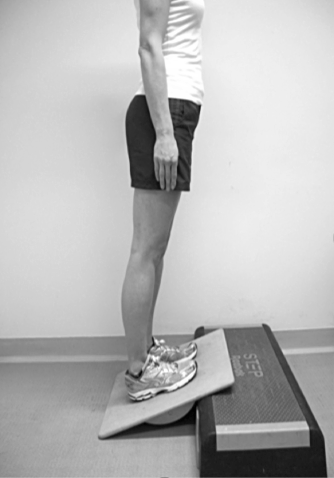
Ms Julie Kohls
Consultant Orthopaedic Surgeon
Flat feet refers to individuals who have a very low instep. Some individuals just have a low instep and for some individuals the arch of the foot has completely collapsed.
FLAT FEET OR PES PLANUS //
IS THERE A PROBLEM WITH HAVING FLAT FEET?
Sometimes flat feet aren't a problem for the individual and provided all the structures in the foot are intact and the joints move there is nothing to worry about.
If you can stand up onto tip toes easily and if you have a well shaped arch when you do so - most likely you have flexible flat feet.
Still a very flat foot means your foot may be inefficient at storing energy and so your feet can feel quite tired after standing and walking.
Also sometimes knee pain can be exacerbated by flat feet. Cramps in the back of the legs and back pain all can occur alongside flat feet. Even conditions such as plantar fasciitis and hallux valgus can be worsened in combination with flat feet.
POSSIBLE CAUSES OF PAINFUL FLAT FEET:
Flexible
-
Accessory Navicular
-
Tibialis Posterior Tendon Dysfunction
-
Spring Ligament Rupture
-
Deep Deltoid Injury
-
Plantar Fasciitis
-
FHL Tendinopathy
-
Posterior Ankle Impingement
-
Osteochondral Lesion
-
Seronegative Arthritis
Rigid
-
Coalitions
-
Arthritis







Heel Strike Foot Flat Move over foot Toe off
-
Most individuals with a painful flat foot (and many with a pain free one) over stretch the structures in the arch of the foot with every step
-
In normal gait as the body moves over the foot the arch is meant to tighten and be well formed to conserve energy when the foot toes off
-
Over pronation occurs when a tight muscle in the back of the legs restricts ankle motion so that as the body moves over the foot the arch flattens even more (rather than rising and assisting with toe off)
IF I NEED SURGERY WHAT DO I NEED TO KNOW?
QUICK HELP
Activity modification, trainers or shoes with well built instep and some basic stretching may be all you need.
XRAYS & APPOINTMENT IF:
-
If you have a painful foot that has become flatter and changed shape (either suddenly or over time).
-
If you have had an 'ankle sprain' or injury that has made the arch of your foot bruised and tender.
-
If you can't do the activities you want to do because of your painful flat feet
-
If you have flat feet that are stiff.
WHAT WILL HAPPEN IN CLINIC?
-
You will have a detailed history and examination, specialist X-rays and most likely an MRI scan if you have pain in the arch or feel that your feet are changing shape.
-
Many, in fact most, patients do not require surgery.
-
Whenever possible I will produce a list of the structures that have been injured, the biomechanical imbalances that need to be redressed and a plan for rehabilitation for you and your physiotherapist.
-
Many patients require insoles.
-
Virtually all patients require physiotherapy
-
Slant boards for stretching are de rigueur!


More Information
-
Tibialis Posterior Tendon Dysfunction
-
Tight gastrocnemius in children
